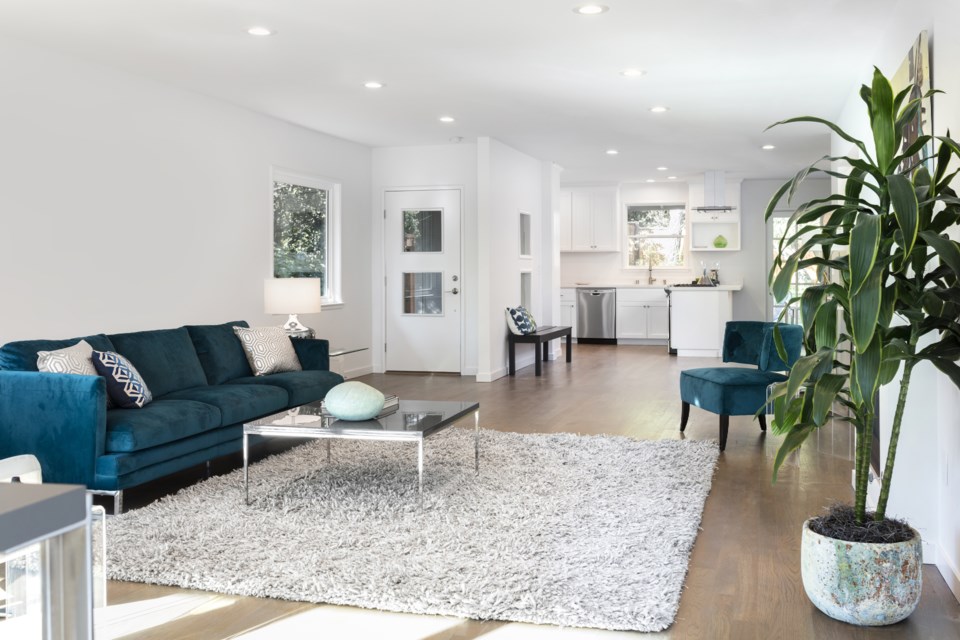When your house is on the market, there’s an expectation it will be kept at a certain standard of cleanliness.
How do sellers survive this period?
“Selling and dwelling are two different things,” says Andra Arnold, a top real estate agent in Guelph. “Selling is making sure that the house appears in person the same way it does in photos.”
Having a plan of attack and a routine really helps. Thankfully, she is willing to share some of her tricks.
Kitchens, bathrooms, real life
Start by making sure surfaces are clean throughout your home and things are tucked away, especially in your kitchen and bathrooms. Only have the appliances you consider necessities out; find a home for them where they can be stashed away and only brought out when needed.
And relax, it’s okay to have dirty dishes in your dishwasher. Your sink should definitely be kept clean and empty at all times but having dishes in your dishwasher is perfectly fine.
Everyone has dirty laundry, but how do you disguise it? Put it in a laundry basket, then place a stack of clean, folded towels on top.
You also need to ensure you have the necessities for living. You should be able to part with a few things—those you don’t use all the time or that could be considered luxury items you just like to have around. If they’re acting as clutter, put them away.
What about the truly unglamorous stuff: the smelly hockey gear that’s normally left to dry in the basement or the litter box in the kitchen? Find a new home for them, says Arnold, a better, more convenient system that won’t impede on the sale. Odours are particularly off-putting to potential buyers, so have a plan: train your pets to go to the bathroom in a different area, like downstairs.
Make things convenient for yourself as well; you still have to live.
Main living areas
“There should probably be a sparser amount of furniture than you’re accustomed to,” says Arnold, “but again, you should keep the things that are mandatory in your life.” You probably don’t need to have four couches; just one and some chairs would suffice.
Many agents say you should depersonalize your home, but she believes having some family photos up is okay, especially the ones that are super important to you.
“But not all of your photos,” the real estate agent warns. “If you have a massive rogues’ gallery on your staircase that dates in chronological order from kindergarten to grade 13, it needs to come down. You don’t need the person purchasing your home to know your whole life; what you want them to do is picture their own life there.”
Many, understandably, have an emotional attachment to their property. Ideally, though, you want to be excited for the person who’s going to own your home, so try to go in with that mindset. Like attracts like, she believes.
Prepare for the long haul, just in case
“Even though the market is very swift right now, it’s not always. If your home is on the market for a long time you don’t want to get frustrated. It can become quite tiring, so you want to make sure that you can live while you’re selling,” she says.
It can help to know how long the process might take.
“It really is dependent on the type of home, its size and the amount of time someone has lived in it,” says Arnold. “A larger property that’s $1.5 M or higher can stay on the market for a really long time. Typically those properties are, for the most part, quite pristine anyways.”
Right now the average number of days on the market is 14. That reflects a very strong seller’s market, but we’ve also seen times where the average is more like 60 or 75 days. That’s why it’s important to make sure you’re comfortable and won’t grow tired of the whole process.
Staging
If you’re staging your home, you need to be able to live with the staging that is implemented.
“It’s functional living when you have a house staged, it’s not dwelling, that’s the difference,” she says. You’ll likely have just a basic amount of comfort because that’s what best showcases your home.
A vacant house is easier to stage because it’s a blank palette. Stagers move furniture in and put art on the walls. When people are living in a house, if they have small children and pets, it can be trickier.
Lastly, take it easy on the kids; a move is already such a big deal for them. Children do have a lot of stuff but try to minimize disruption in their rooms. Put strategies in place that will deal with their Legos but won’t impede too much on their lifestyle.
Andra Arnold can be reached at 519-766-6041 or via email at [email protected].

